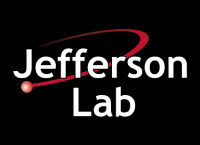Thomas Jefferson National Accelerator Facility (Jefferson Lab) provides scientists worldwide the lab’s unique particle accelerator, known as the Continuous Electron Beam Accelerator Facility (CEBAF), to probe the most basic building blocks of matter by conducting research at the frontiers of nuclear physics (NP) and related disciplines. In addition, the lab capitalizes on its unique technologies and expertise to perform advanced computing and applied research with industry and university partners, and provides programs designed to help educate the next generation in science and technology.
Majority of computational science activities in Jefferson Lab focus on these areas : large scale and numerical intensive Lattice Quantum Chromodynamics (LQCD) calculations, modeling and simulation of accelerators and the experiment detectors, fast data acquisition and streaming data readout, high throughput computing for data analysis of experimental data, and large scale distributed data storage and management.
Many Jefferson Lab scientists and staffs lead or actively participate the computational efforts in the above areas. Among those are computer/computational scientists and computer professionals from newly formed computational sciences and technology division (CST), physicists from physics division and the Center for Theoretical and Computational Physics, and accelerator physicists from Center for Advanced Studies of Accelerators (CASA). In addition, collaborations with universities and industrial partners further research and development in computational science.
Jefferson Lab maintains various state of art high performance computing resources onsite. CSGF students will utilize these resources to carried out their researches in the specific areas described below:
Accelerator Modeling
CASA and Jefferson Lab SRF institute focus on advanced algorithms, such as fast multipole methods, for multiparticle accelerator dynamics simulations, artificial intelligence (AI) and machine learning (ML) applied to superconducting RF (SRF) accelerator operations, and integrated large and multi-scale modeling of SRF accelerator structures. These areas will be an essential part of a national strategy to optimize DOE operational facility investments, and to strengthen Jefferson Lab’s core competency of world-leading SRF advanced design and facility operations. Especially, current active simulation projects
like electron cooling, intra-beam scattering, and coherent synchrotron radiation present diverse research domains ranging from numerical algorithms development to parallel computing.
Streaming Data Readout
With tremendous advancement in micro-electronics and computing technologies in the last decade, many nuclear physics and high-energy physics experiments are taking advantage of these developments by upgrading their existing triggered data acquisition to a streaming readout model (SRO) , whereby detectors are continuously read out in parallel streams of data. An SRO system, which could handle up to 100 Gb/s data throughput, provides a pipelined data analysis model to nuclear physics experiments where data are analyzed and processed in near real-time fashion. Jefferson Lab is leading a collaborative research and development effort to devise SRO systems not only for CEBAF 12GeV experiments but also for the upcoming EIC facility. SRO development offers CSGF students some exciting research areas such as network protocol design, high speed data communication, high performance data compression and distributed computing.
Physics Data Analysis
Analysis of data from modern particle physics experiments uses technically advanced programming and computing techniques to handle the large volumes of data. One not only needs to understand aspects of parallel programming using modern languages such as C/C++, Java, and Python, but also must incorporate knowledge of experimental techniques involving error propagation and estimation in order to properly interpret the results. Aspects of this range from writing a single algorithm used in event reconstruction, to using the collection of algorithms written by others, to managing campaigns at HPC facilities that apply these algorithms to large datasets. Detector calibrations and final physics analysis are also significant parts of the analysis chain. CSGF students could participate in any of these areas.
Machine Learning
Rapid developments in hardware computational power and an ever increasing set of data has lead to explosive growth in machine learning techniques, specifically deep learning techniques. These techniques threaten to change just about every facet of modern life and nuclear physics is no exception. At Jefferson Lab machine learning is being developed for every step in the physics workflow. To deliver beam to the experimental halls the accelerator relies on radio frequency (RF) cavities to accelerate the electrons. Occasionally these cavities, of which there are over 400 in operation around the accelerator, fault which disrupts the delivery of the beam to experiments. To quickly identify and diagnose cavity faults A.I. is being developed and deployed. Experiments themselves are developing and/or deploying A.I. to monitor detector performance, decide what data to keep, reconstruct detector responses, simulate the detectors, and even to analyze collected data. With the active development of machine learning tools and techniques Jefferson Lab hopes to drive nuclear physics research forward, enabling physicists to more quickly obtain and analyze high quality data.


